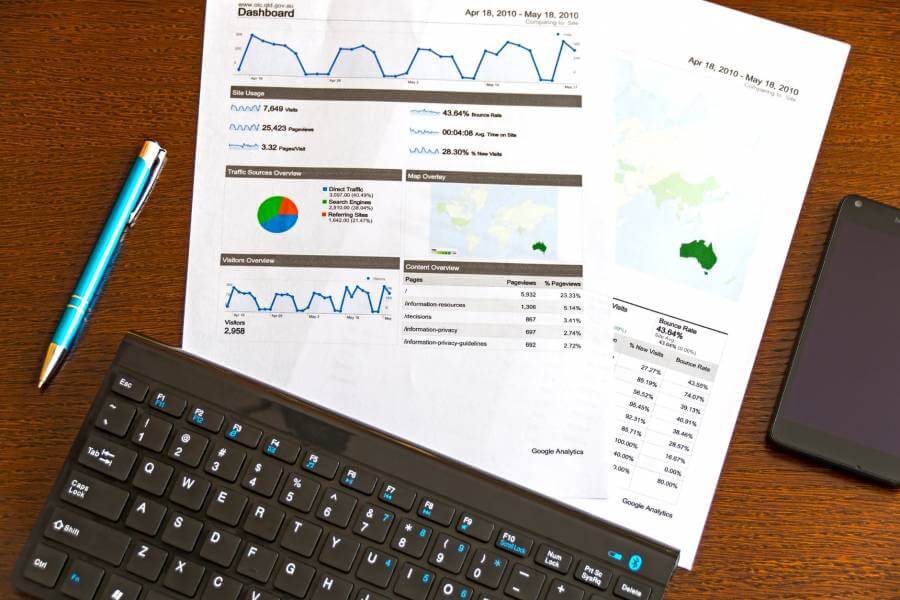What Are the Benefits of Location Data Analytics?
Are you getting valuable insight and information from your consumer data? Chances are if you’re relying exclusively on charts, tables, and spreadsheets for your analysis, there’s a good answer you’re not. Location analytics uses your business’ data to uncover deeper insights than average analysis. It incorporates GIS mapping software to bring forward comprehensive information effortless. What Are the Benefits of Location Data Analytics?

What Are the Benefits of Location Data Analytics?
What is Location Analytics?
Location analytics, also called geoanalytics, combines traditional analysis with location data to better understand your current business. Large enterprises and organizations (with multiple locations) often use this analysis but can prove beneficial to small businesses trying to expand overall. Location analytics works to visualize insights into an interactive map using layers of actionable data. Most businesses use some level of location data analytics for strategic purposes.
What Types of Businesses Benefit from Analytics
Virtually any organization can benefit from deeper data analytics, particularly businesses with multiple locations or geographically dispersed customers. As a company continues to grow, so do the insights and consumer demographics. These shifts can significantly impact target markets, territories, and project growth patterns. Integrating your data with GIS mapping software can facilitate sales efforts, identifying hidden pieces of data that otherwise would remain hidden.
Marketing departments can quickly identify customer behavior or shifts within buying patterns. Users can locate prime purchasing areas along with average spending habits. Insight provides key demographics needed to customize marketing efforts to location-specific information, including current customers or identified target areas.
Location data analytics offers businesses a powerful tool to gain valuable customer insights, enabling them to tailor marketing efforts, optimize routes, and uncover hidden opportunities for growth.
Likewise, location mapping software offers route optimization through the interface. This optimization can improve deliveries, adapt to traffic or construction within the geographic area, and provide real-time changes for users. The cloud-based service allows instant access to the software, improving accessibility for all mobile members.
Critical Components of Location Analytics
Adding location data to company analysis adds considerable dimension to development and understanding. If you’re trying to get the maximum benefit out of your location analytics, some components are non-negotiable.
Assess Marker Data
Any uploaded data on your mapping software should integrate all components of your information. Each data marker represents a single entry, although pie chart clusters and tags are available too—pie charts aid in processing data quickly.
Always look for grouping functionality when choosing mapping software. Data grouping allows the user to adjust the map contents by color, size, and more. These include a color-coding option and simplified sorting.
Demographic and Census Data
Marketing and decision-making have a direct connection to the demographics of your audience. To uncover hidden population strategies, incorporate census data whenever possible. Some mapping software will include the census data, bringing streamlined capabilities. Other platforms require individual input into the program before integrating it into your map. Critical population data have population density, median household income, education, race, age, and more. After all, the more you know about your target audience, the better tailored your marketing efforts will be overall.
Boundary Functionality
Establishing boundaries is critical to define your area, whether the user sets city limits or individual limits. Look for mapping software that incorporates simple division and color-coding for complete understanding. Create sales area or territory limitations within the mapping software to develop further insight overall.
Heat Mapping
Heat maps help to measure the density of data in each location. The colors on the map directly represent density, with most users having orange and red for higher-density sites. Lower density locations are often depicted in blue. Blue areas within a map might mean your company could expand or continue to build.
Understanding the Benefits of Location Data Analytics According to Industry
What Are the Benefits of Location Data Analytics?
Benefits for this type of evaluation will vary considerably, depending on the industry and size of the company. Some specific features include thorough competitor analysis and insights into new site locations. Likewise, businesses can unlock new opportunities and insights often concealed by traditional business analysis methods.
These insights help maximize profitability by optimizing routes within the company (for example, deliveries, logistics, and sales appointments). By maximizing these routes, you’ll eliminate poor-performing locations and help streamline supply chains.
For example, real estate agencies and developers can locate target markets and meaningful upcoming opportunities. Service-based companies like food delivery applications can increase revenue and coordination efforts overall, using real-time insights from location-specific analytics.

Founder Dinis Guarda
IntelligentHQ Your New Business Network.
IntelligentHQ is a Business network and an expert source for finance, capital markets and intelligence for thousands of global business professionals, startups, and companies.
We exist at the point of intersection between technology, social media, finance and innovation.
IntelligentHQ leverages innovation and scale of social digital technology, analytics, news, and distribution to create an unparalleled, full digital medium and social business networks spectrum.
IntelligentHQ is working hard, to become a trusted, and indispensable source of business news and analytics, within financial services and its associated supply chains and ecosystems









